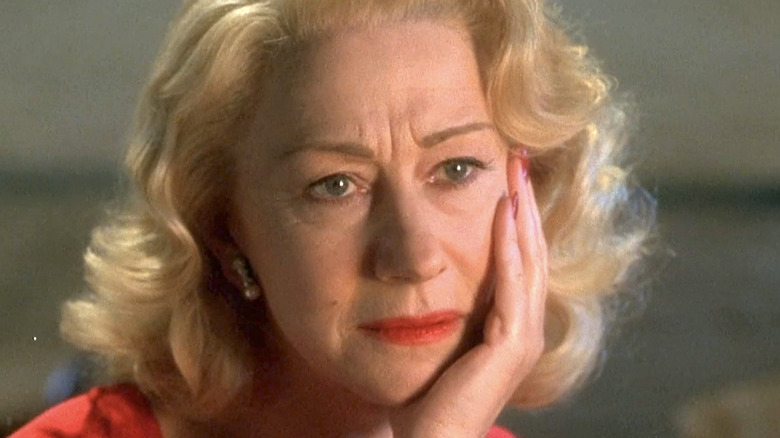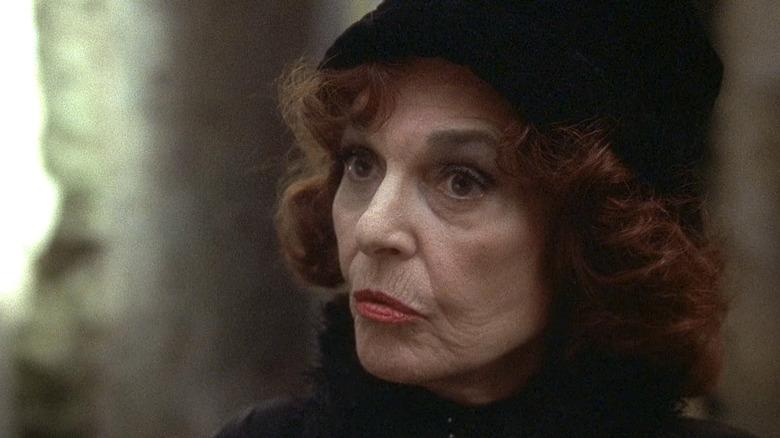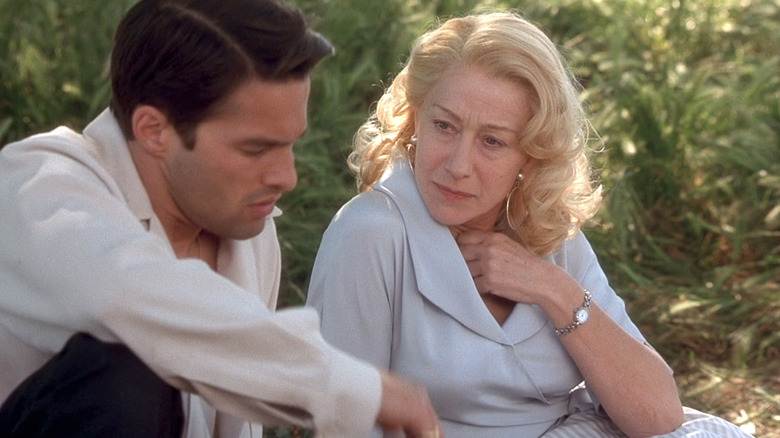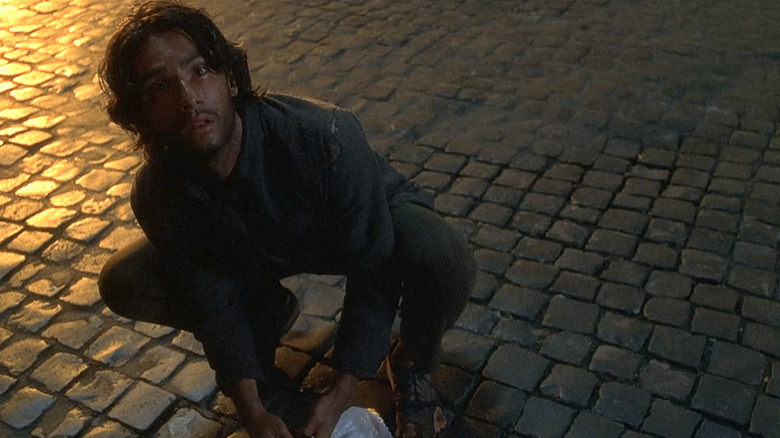The Ending Of The Roman Spring Of Mrs. Stone Explained
Based on the 1950 novel of the same name by Tennessee Williams, the 2003 made-for-television film "The Roman Spring of Mrs. Stone" is the second screen adaptation of the novel, acting also as a remake of the 1961 film. The movie tells the story of a retired widowed actor named Karen Stone (Helen Mirren) who chooses to reside in Rome, Italy following her husband's death. There, she meets a woman known simply as the Contessa (Anne Bancroft) who pairs her with a younger man named Paolo (Olivier Martinez), only to find out later that the two plan to use her for her fortune. The film would go on to receive five Primetime Emmy nominations, including lead actress for Mirren, supporting actress for Bancroft, and best directing for Robert Allan Ackerman. It would also garner two Golden Globe nominations for best miniseries/television picture and best actress for Mirren.
Derived from the works of Williams, the film blends elements of theatrical and literary storytelling that allow room for plenty of heavy thematic elements to be presented. Gaining a grasp of how these aspects are incorporated into 2003's "The Roman Spring of Mrs. Stone" allows for a stronger appreciation and understanding of the film and where it ends up going. So without further ado (and obvious spoiler warnings), here are some key factors of "The Roman Spring of Mrs. Stone" that help provide a better understanding of its ending.
Why is the Contessa so cruel?
Anne Bancroft's turn as the Contessa is a show-stopping performance. Her character was once a powerful Italian aristocrat until after World War II (the time period in which the film takes place), and at the point that Karen Stone meets her, she's lost all her family fortune and is scraping to get by. Her only means of living is connecting lonely Americans with handsome Italians. The Contessa starts off acting very kind to Stone, but as the film progresses and the widow does all she can to avoid any involvement with money, the Contessa transforms into a far more desperate character.
Contessa's motives and actions express Italian sentiments post-WWII while also providing a grander picture of the human psyche and its will for survival — common themes found within Tennessee Williams' work. The tension she creates is appalling, especially considering she's taking advantage of a heartbroken individual, but viewers can't help but relate to her drive and pride at some moments in the film. By the end, when Stone kicks Contessa and Paolo out of her home, the Contessa leaves behind some harsh closing lines on how despicable it is for Stone to tell them "how to behave" with all that their country and family have endured. It leaves both Stone and the audience with a heavy feeling inside, as Contessa's painfully true words give us something to think about.
The fading beauty and the rising beast
Another common trope found in most of Tennessee Williams' work is the decay of youth and the emotional dissolution that it brings along with it. This is especially strongly presented here, as a big reason why Karen Stone chooses to retire from acting is due to the harsh criticism she receives for playing a role that she is considered too old for. As a result, she loses confidence in her body, most notably when she and Paolo see each other naked and she insists on keeping the lights off, fearing he'll find her unattractive. However, Paolo makes her feel more comfortable as the film progresses, allowing her to let her guard down more and more. She becomes smitten with the pride he has in his beliefs, as well as his loving and accepting nature.
Towards the end, however, when it's clear that Paolo has no real love for her, it becomes obvious just how much she has been blinded, and because of that, how much power Paolo has gained for himself. Even though Paolo walks out with none of Stone's fortune that he is initially hoping to gain, the tragic state he leaves Stone in speaks volumes about what he truly takes from her, and that's her self-esteem and pride. The fragility of her situation, especially after the passing of her husband, leaves her desperate for connection. But after her encounter with Paolo, which she initially believes to be a true connection, Stone ends up in an even colder place.
The mysterious stranger becomes more than a friend
One of the most unique characters to inhabit "The Roman Spring of Mrs. Stone" is an unnamed homeless stranger, who appears from the start of the film and follows Stone in various locations. Played by Rodrigo Santoro (who you might recognize from "Westworld"), he never speaks a word nor appears to pose much of a threat, other than a brief scene in which he sticks his hand down his pants while locking eyes with Karen Stone from outside her window. At the end of the film, however, his role drastically changes.
Following the exit of Paolo and the Contessa, Stone finds herself in a confused and heartbroken state. Spontaneously, she decides to wrap the keys to her house in a napkin and throws it out to the stranger standing outside. He enters and the film's closing scene sees the two approaching one another, implying that an intimate action is about to take place. One can interpret the stranger as a pure, unbiased window into Stone's real needs. Unfazed by her fame or fortune, he is the only one who is fascinated by the real her and wants to take a peek into the window of her true humanity.
Stone may realize that after the mess she endures with Paolo, her inviting the stranger in and choosing to embrace him could indicate that she finally finds the appreciation she's been waiting for. Or, it could just as easily lead to more tragedy, with her need for love and companionship still blinding her instincts. The cycle could happen all over again. Regardless, the stranger character bookmarks the beginning and end of the film, starting as a lonely outsider and ending by being embraced in a display of warm affinity and desire. One way or another, these two seemingly distant strangers — Stone and the man — may not be that different after all.



